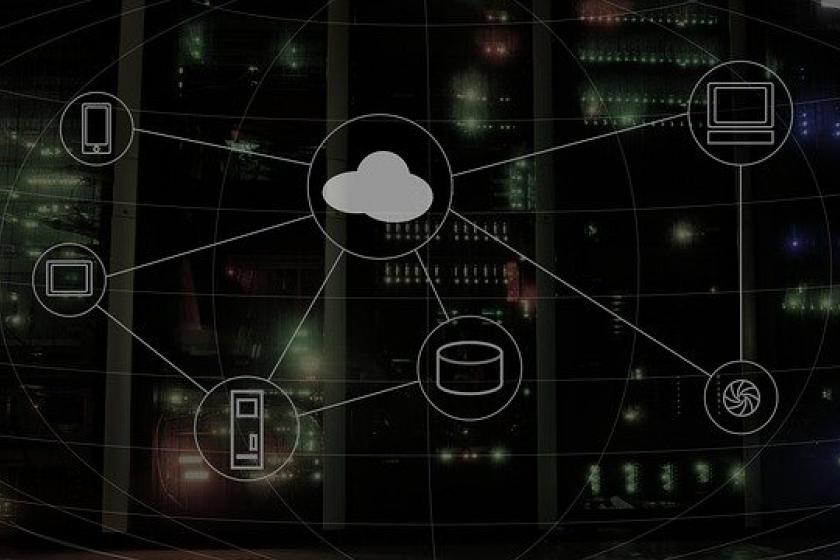Hybrid’s Dominance Brings New Focus to the Data CenterHybrid’s Dominance Brings New Focus to the Data Center
Hybrid is the dominant infrastructure today and likely for the foreseeable future. As such, IT and data center managers will need to ensure both data center and cloud environments are highly available and responsive.
October 28, 2022

While many enterprises are using cloud for storage, compute, and network services, the are many reasons (investments in existing infrastructure, data privacy and control, and more) to keep some things on-premises. As such, data centers remain important and are a critical part of what is now the most dominant deployment model: hybrid infrastructures.
Recent global market research from IBM confirmed just how prevalent hybrid has become. The IBM Transformation Index: State of Cloud, commissioned by IBM and conducted by The Harris Poll, found that 77% of enterprises surveyed have adopted a hybrid cloud approach.
The Index, based on the responses of 3,000 business and technology decision-makers from 12 countries and across 15 industries, was created to help organizations map their cloud transformation and empower them to self-classify their progress. It reveals why hybrid is so important.
For example, it found a strong correlation between hybrid cloud adoption and progress in digital transformation. In fact, 71% of those surveyed think it's difficult to realize the full potential of a digital transformation without having a solid hybrid cloud strategy in place.
Additionally, the study found that individual clouds cannot address all of an enterprise's requirements, so enterprises must use a hybrid approach. Why? "The key value of cloud for businesses is rapid access to innovative technologies, data sources, and applications required to navigate current disruptions and transform businesses,” said Rick Villars, Group Vice President of Worldwide Research at IDC.
How this impacts the data center
User expectations today are incredibly high. It does not matter if it is an employee, customer, client, or partner, all are accustomed to 24x7 access to applications and services that are highly responsive.
As such, IT and data center managers have a large role to play in optimizing hybrid infrastructures and environments. The greatest pressure is meeting modern business demands. Due to user demands and expectations, many companies now operate with an always-on approach, which places a burden on data center managers to keep sites running.
In a hybrid environment, cloud providers have built-in capabilities to help ensure availability and performance. They can route around an outage and easily scale to deliver consistent performance. That means the data center portion of a hybrid environment must do the same.
What are data center managers doing about this? “We’ve seen the industry invest in increased resiliency and reliability,” says Andy Lawrence, executive director of research, at Uptime Institute Intelligence. “But there’s still work to be done when it comes to improving efficiency, environmental sustainability, outage prevention, staffing pipelines, and more.”
In fact, the institute’s recently released 12th Annual Global Data Center Survey found that more organizations are investing in bolstering data center resiliency. Specifically, data center owners and operators are making significant investments in the resiliency of their physical infrastructure, with about 40% of respondents reporting increased redundancy levels at their primary data centers in the past three to five years. Power and cooling systems have received similar attention, with a third of operators upgrading either or both.
The need for such investments was quantified in the survey. It found that data center outages are becoming more expensive. And although outages have dropped in frequency since they spiked in 2020, they’re still far too frequent. The share of all outages costing operators over $1 million has reached 25%, a significant increase from 15% in 2021. In 2022, 60% of operators reported experiencing an outage (regardless of severity) in the past three years — down from 69% in 2021 and 78% in 2020. Although the data indicates a trend toward improved outage rates, the frequency of outages is still much too high, and with more than two-thirds now costing operators upwards of $100,000, the consequences are getting worse.
Another option is to move more operations out of the data center to the cloud. Naturally, some businesses want to keep applications, data, and services on-premises. The reasons vary greatly, but often it comes down to having more control over performance and security. Additionally, there have been a number of major cloud outages in the last few years that have raised concerns about cloud.
However, the Uptime Institute survey found that confidence in public cloud is on the rise, despite ongoing outage risks. It noted that as the perception of improved visibility into cloud operational resiliency grows, organizations are more likely to trust the cloud for mission-critical workloads. In 2022, just 63% of operators are not placing mission-critical workloads into a public cloud, a substantial drop from almost 75% in 2019.
Bottom line
Hybrid is the dominant infrastructure today and likely for the foreseeable future. As such, IT and data center managers will need to adapt to a world where they must ensure both data center and cloud environments are highly available and responsive.
Related articles:
About the Author
You May Also Like




